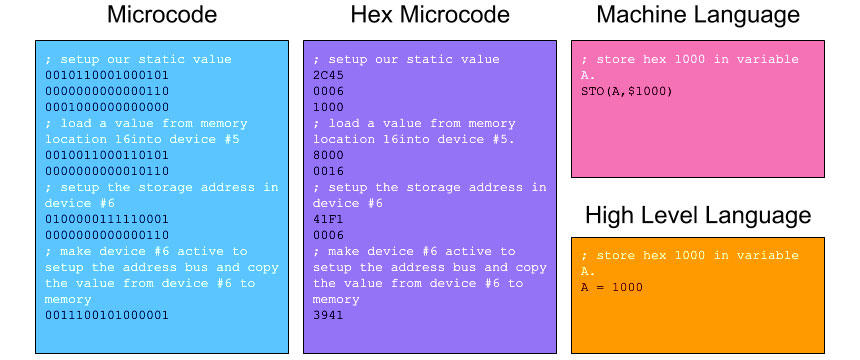Microcode - Machine Language - Higher Level Language Example
It is too early to do this justice, but I wanted an example of how the different levels of code might compare. This example is very simple, as each version stores a decimal value of 4096 to a variable (assuming the variable is already setup so that it is usable). Variables are abstracted, but should work like registers, with the ability to read and write to them, perform math functions on them, etc.

At a high level, we want to be able to say "put 1000 into variable A", but at lower levels we are forced to work with actual memory addresses, physical registers, etc. The difference in complexity is obvious, but to get to a high level language we need to write language functions (like variable read and write) in lower level code and then call them by their starting address in the firmware. Where higher level functions require passing values, we need to setup stacks or registers with the appropriate values so that the function will have what it needs. Functions will often need to update registers or locations in memory, so standards need to be developed and adhered to.
I will go into firmware memory segmentation in the next post, as it is an important concept to get across clearly.
